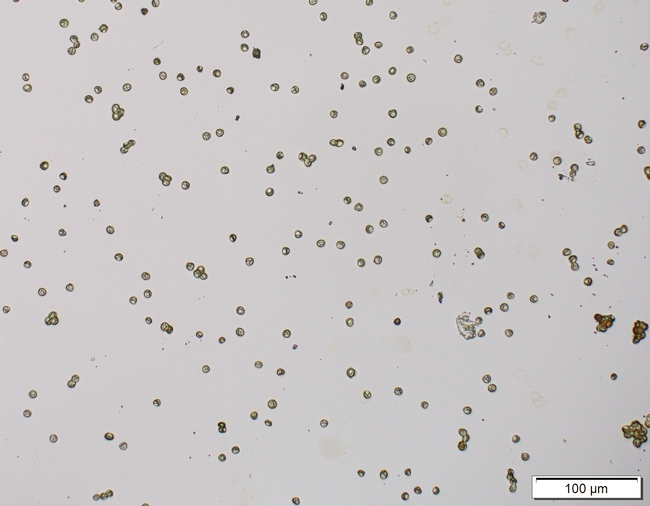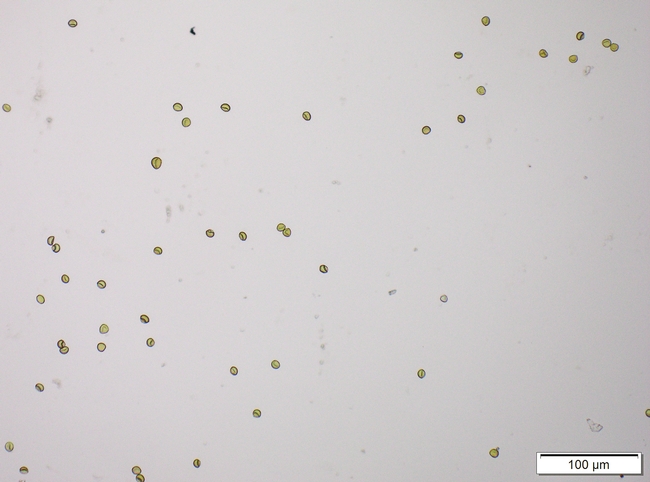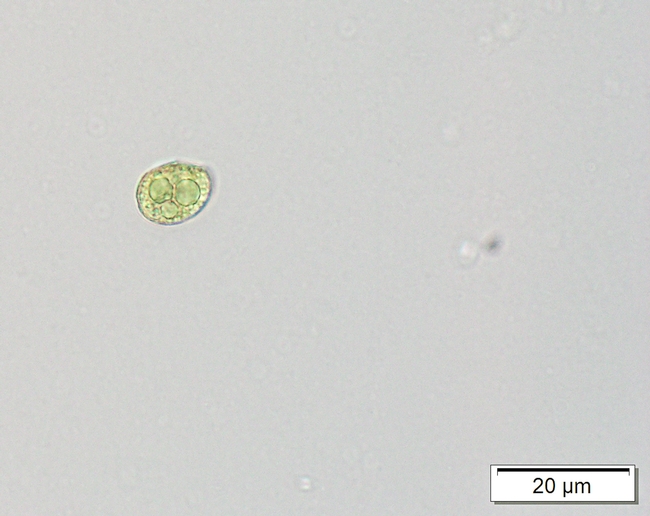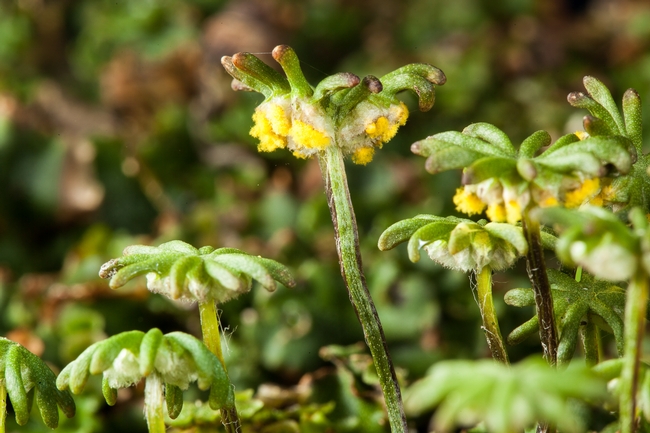Spores are key to the success of the liverwort

Fig 1. Dry liverwort spores are less than 3.5 microns in diameter, smaller than many fungal spores.

Fig 2. Liverwort spores quickly imbibe water and more than double in diameter (same scale as above)
Fig 3 (left) is a more magnified image of the previous image showing some internal structure of the spore.
The sporelings grow rapidly with mineral nutrients and a cool moist environment. In laboratory conditions new reproductive structures could begin to form in just 3 to 4 weeks, and the whole sexual life cycle, from spore to spore, takes about 3 months.
An experiment in 1925 and other more recent confirm that the sexual reproductive phase of liverworts is induced with long days (12 hours or longer photoperiod). Other similar experiments have shown that far-red wavelengths of light also promote the sexual stage and therefore spore formation. Far-red light is mostly invisible to our eye and is found in greater proportions to that of visible light in the shadows, under benches or under plant leaf canopies. This knowledge leads to interesting management options. Could greenhouse covers or supplementary films or sprays be manufactured that reduce or eliminate far red light for the purpose of eliminating liverwort spore production?
In any weed management strategy, look for strengths and potential weaknesses of a weed's biology and life cycle. Since liverwort spores are so important to the success of liverworts, we need to reduce or eliminate reproductive structures. The information on photoperiod tells us that reproductive structures could begin to be formed in the longer days of spring and summer. If you needed to target a critical time to rogue immature liverworts or apply herbicides, it would be in the period before reproductive structures could mature and produce spores.

